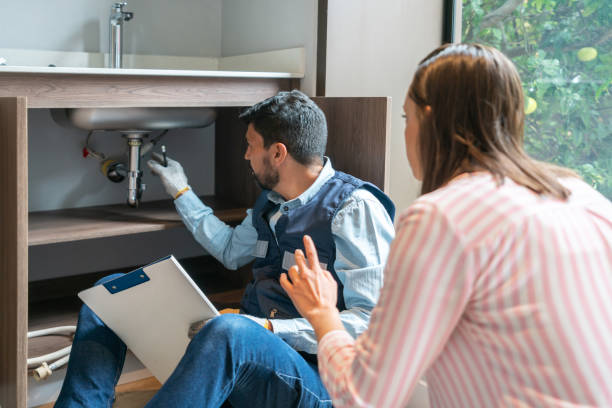Mold in Residential Homes
Mold growth occurs in a variety of buildings, both old and new, all depending on the environment. In damp places with bad ventilation, mold spores can land and begin to grow on a variety of materials such as wood, paper, drywall, tiles, carpet, and more. Because of its love of moisture, mold is often found growing near a water leak, such as near a roof, window, or pipes. Home builders need to be careful and ensure that their building materials stay nice and dry to avoid building new construction with mold.
How to Check for Mold in the House
If you have mold in your home, you will most likely see or smell it. It is often green or black in color, and can look fuzzy in texture. The smell is similar to mildew, very “musty” or “earthy”. One of the most well-known types of mold is “Stachybotrys chartarum,” more commonly called black mold or toxic mold. This mold feeds on wood and drywall, and grows very quickly. It’s also fairly tough to remove so action needs to be taken quickly.
Just because you can’t see the mold, however, doesn’t mean that it’s not there. If the residents of the house start experiencing unexplained health effects such as respiratory issues, a mold inspection should be scheduled. If you start having medical symptoms but don’t see any mold, you can check some of the common areas such as under the sink, behind house siding, under carpet, or around the bathtub. If you find mold around the bathtub or shower, remember – ventilation is your friend.
Is it Safe to Live with Mold in the House?
Mold produces allergens and irritants, which can cause health effects when inhaled or touched. Those who already suffer from seasonal allergies or asthma will be the most effected, because mold causes the same symptoms and will exacerbate them if already present.
Whether you already experience allergies or not, mold in the house can cause the following symptoms:
- Sneezing
- Runny Nose
- Red Eyes
- Skin Irritation
- Cough
- Fever
- Shortness of Breath
The onset of symptoms varies per person, and can happen immediately or more delayed. Even if you aren’t experiencing health effects from the mold, if you have identified it in the house, it needs to be removed as soon as possible. The longer that mold remains where it is, the more damage it will cause to the home.
How to Get Rid of Mold
If you discover mold in your house, it is important to contact a licensed expert for help. A professional will be able to not only remove the mold safely, but address the route cause of the problem. After the cause is fixed and the mold is treated, the area will need to dry out completely, which usually takes at least 48 hours.
The cost of mold removal will of course depend on the situation, but averages at around one to two thousand dollars. While that may sound like a lot, ensuring that you and your family are living in a safe home is priceless. If the mold occurred after a recent remodel, you can contact a construction defects attorney to take legal action against the builder.




No Comment